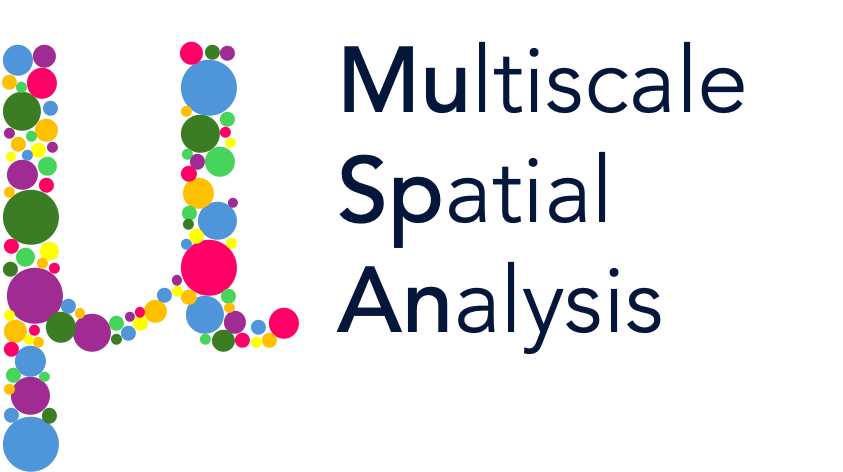sliced_wasserstein_distance#
- sliced_wasserstein_distance(domain, population_A, population_B, include_boundaries=None, exclude_boundaries=None, boundary_exclude_distance=0, label_name=None, POT_args={})#
Compute the Sliced Wasserstein Distance between two populations within a given domain. The Wasserstein distance is a measure of the distance between two probability distributions over a metric space. For spatial data, it quantifies how much “work” is needed to transform one distribution of object positions into another.
Instead of computing the Wasserstein distance directly in high-dimensional space, the Sliced Wasserstein approximates it by projecting the distributions onto lower-dimensional subspaces (typically 1D) and computing the Wasserstein distance in these subspaces. The final distance is an average over multiple projections.
- Parameters:
- domainobject
The domain within which the populations are defined.
- population_Aarray-like, list, tuple, or muspan query
The first population for which the Sliced Wasserstein Distance is to be computed.
- population_Barray-like, list, tuple, or muspan query
The second population for which the Sliced Wasserstein Distance is to be computed.
- include_boundariesarray-like, list, tuple, or muspan query, optional
Boundaries within which the populations are considered. If provided, only objects within this boundary are used.
- exclude_boundariesarray-like, list, tuple, or muspan query, optional
Boundaries within which the populations are considered. If provided, only objects within this boundary are used.
- boundary_exclude_distancefloat, optional
Buffer to exclude objects located within boundary_exclude_distance from the boundaries. Defaults to 0.
- label_namestr, optional
The name of the label to weight the spatial distribution of objects. Must be a continuous label. Defaults to None.
- POT_argsdict, optional
Additional arguments to pass to the POT (Python Optimal Transport) library’s sliced_wasserstein_distance function.
- Returns:
- float
The Sliced Wasserstein Distance between the two populations. If either population is empty, returns NaN.
- Raises:
- ValueError
If one or both of the populations contains no objects within the boundaries specified.
Notes
For information on the Wasserstein distance and computational approaces, see https://en.wikipedia.org/wiki/Wasserstein_metric and https://pythonot.github.io/index.html. The function first interprets the populations and boundary (if provided) to obtain object indices. It then computes the centroids of the objects in the populations and uses the POT library to calculate the Sliced Wasserstein Distance.
